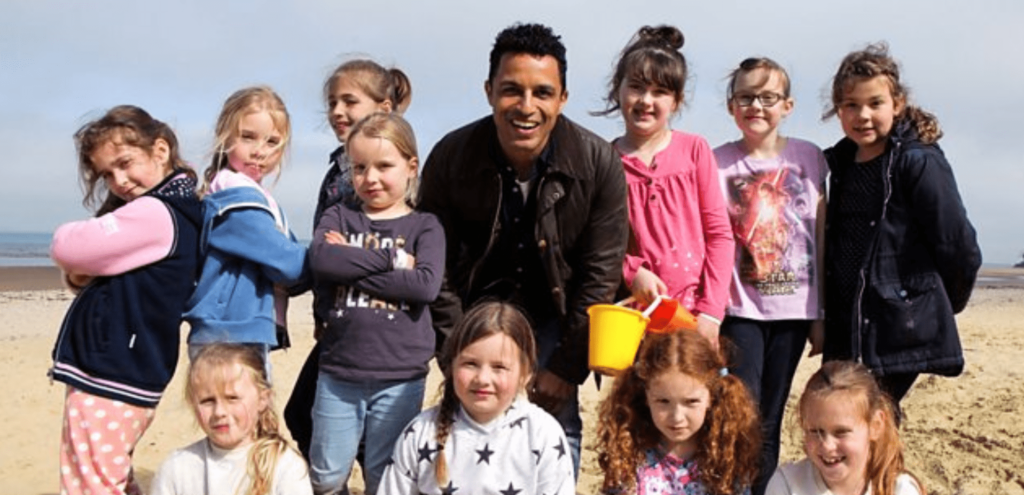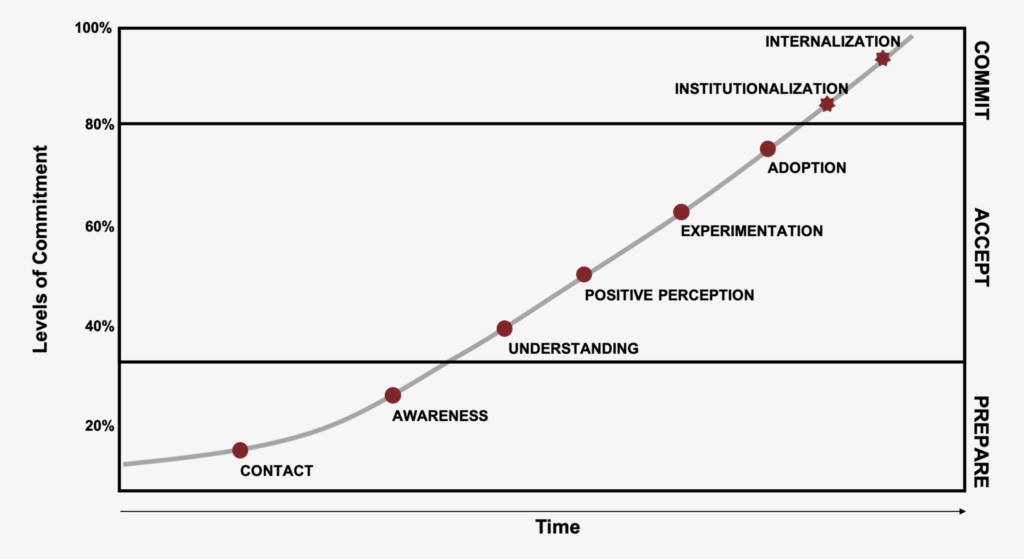We think Lara Bingle, from Tourism Australia’s controversial ‘Where the bloody hell are you?’ campaign, would also want to know — why the bloody hell are we dressing our kids in gender-specific clothes?
Last year, Dr Karen Joyce, the co-founder and Education Director of She Maps went shopping. She went shopping for a top for her four-month-old niece and encountered the infuriating experience that is gender-specific clothing.
We decided to take a look around and see what’s changed in a year. Answer: not much. Below is a quick look at some choice examples currently available in Australia. Guess which ones were only under a ‘boy’s’ label and which were only under a ‘girl’s’:
So why on earth is this still happening? One theory of ours is that gender is bloody confusing. It’s hard to decide what to think when all of the arguments seem to go round in circles.
Enter, this article. Yes, we admit, it does do some circling but it’s circling for a good cause — to clearly and concisely make sense of gender categories so we can all make better choices (and so we finally have a retort for anyone who uses the classic, ‘So, you think men and women have no differences then?’
Parents, kids, and the marketing of gender-specific clothing and toys
One thing is for sure – we need to kick one of these out of bed.
To summarise Karen’s points from her infuriating experience last year buying children’s clothing:
- Children don’t come out of the womb wanting gender-specific clothing — this is all about parents, siblings, grandparents, and society in general influencing their child’s ideas and beliefs from the very beginning.
- Why are socks with dinosaurs on them labelled ‘boys’? Is there something fundamentally different about the shape of a child’s foot at that age that meant those socks needed to be gender labelled?
- Why are there even separate clothing sections for boys and girls? Why not simply ‘children’s clothes’ and the child or parent can choose the items that they like?
- Blue used to be considered a feminine colour (remember the Virgin Mary?), while red/pink was used for boys to show strength. This was only flipped in the mid-20th Century by marketing/advertising companies, so there’s actually no foundation for colour choice AT ALL.
- Girls don’t need robots to be marketed directly to them. They just need them to be not marketed directly to boys! Same goes with Lego for that matter.
Boys and girls have different gender experiences
Boys and girls have different gender experiences because society creates these situations.
Dr. Javid Abdelmoneim is well-known as a TV presenter and for his research into gender conditioning in school-age children. In an episode of his show, Dr Abdelmoneim removed the gender-stereotyped wrapping on toys and distributed them to the class. Many girls received the more traditionally ‘boy toys’ – the marble run and a robot. The boys received the craft or ‘sew a bear’ set.
One of the best things about this experiment was that the children took the toys home and played with them by themselves. This meant that they were removed from peer pressure around gender stereotypes about the toys or how to play with them. The response from the children was overwhelmingly positive and wonderful to see the boys and girls engaging with a different type of toy to which they were accustomed.

This technique is similar to what we do with She Maps when we introduce drones. We purposely separate the boys and girls. We know through the literature and our own experience that girls are less confident with robotics and spatial awareness skills. Like it or not, drones are seen as ‘boys toys’. If we remove boys from the picture, the girls are free to take their time to explore and experiment to gain confidence in themselves. We know that this works — teachers and parents tell us all the time!
“My favourite part was the obstacle course and not having boys take over!”
“It was great fun and good for girls to get involved”
That’s not saying that we exclude boys. We absolutely teach boys and men as well – we just do it separately. We recognise that they need a different learning environment, and this is our intervention.

Boy and girls are different, why shouldn’t they dress differently?
Which leads us back to that classic line, “Boys and girls are different.” The implication being that the different stereotypes established in society are therefore correct and should remain.
Here’s where we get into debunking. To do that, we’re going to examine the categories that we currently place people in, why they’re there, and do any of them make any sense? Starting with: sex and gender.
Defining sex and gender
Sex and gender are different things.
Sex
Either of the two main categories (male and female) into which humans and many other living things are divided on the basis of their reproductive functions.
Oxford English Dictionary
Gender
The state of being male or female as expressed by social or cultural distinctions and differences, rather than biological ones.
Oxford English Dictionary
These definitions are far from perfect and there is often overlap. More importantly, as we learn more about the biological nuances of sex and gender, they become harder to define — and maybe this is a good thing outside of biological fields.
British actor, rapper, and activist, Riz Ahmed, once described the categories he is forced to reckon with as a British Pakistani man as: “a necklace of labels to hang around your neck, neither of your choosing nor making, both constricting and decorative.”
As in — labels and categories are heavy, they stop you doing things, and a lot of them are pointless because they don’t serve a decent purpose in everyday society.
So, shall we just abandon the idea of gender and all labels and categories then?
Absolutely not. Categories, labels, even stereotypes, all serve a purpose for humans. It seems that, at this point in evolution, our brains are totally hardwired to create social categories. They help our brains process the large swathes of data that is, well, the entire world around us.
Assuming that our brains have the ability to cope with the world without structure and categories is assuming that we’re a lot smarter than we really are. We can’t process 7.594 billion pieces of data individually (the world’s population) so we learned to classify people into groups — by way of ethnicity, culture, sub-culture, gender, and so many more.
Gender and the realm of the unknown
These classifications have been around for so long that we start to see them as what is “correct”, by default. That doesn’t mean that they are correct. Part of being a good STEM educator is teaching kids to get comfortable with the unknown and challenge statements that pass themselves off as facts, yet really still belong in the realm of the unknown.
Two researchers are getting comfortable with gender and the unknown. Marcia Stefanick, PhD, director of the Stanford Women and Sex Differences in Medicine, and Londa Schiebinger, PhD, are developing a way to measure gender so that it can be accurately correlated to health outcomes.
Why is this unknown? Two main reasons: Genders other than male have not been considered significant enough to study in medicine; we need to understand the biological implications better.
“Sex differences are important from the cellular level up,” says Stefanick. “We really need to investigate the genetics and cell biology to truly understand the implications of these differences.”
Source: Of mice, men and women: Making research more inclusive – Stanford Medicine
When is being gender-specific important?
It’s important to note that these two women are trying to measure gender to achieve better health outcomes. There’s a purpose to the category, unlike the unnecessary necklace of labels Riz Ahmed referred to.
There are other important purposes in favour of letting gender stick around. For example, transgender people currently aren’t appropriately recognised and included in society.
Dismissing genders altogether at a time when trans people aren’t totally accepted risks dismissing their need to be heard, accepted, and included. This can also be shown through the “commitment curve” (below), often used in business but also applied to social justice activism. This is the idea that people need to go through various stages of awareness, understanding, adoption and sustaining before something becomes fully embedded in society.
While you can argue that dismissing genders in 2020 could mean that trans people will be free to do what they like — this kind of hugely drastic change is probably better left to theory. The battle for trans rights is certainly a long way from being at the commitment end of the curve. Medical studies are a good example of how this could go wrong. If we went ‘gender-free’ tomorrow, there is a decent risk that medical studies will continue to overlook the needs of transgender people.
This transgender FAQ is a great resource to familiarise yourself with a lot of the terminology.

Gender and the right to be whoever you are
So, we’re at a point in the article where everything is a bit confusing. Sex and gender are different. We don’t know lots of things about them. We don’t want categories. Sometimes categories are necessary.
Let’s clear all of that up.
There is no science behind gender-specific clothing. Absolutely none.
There is science behind the need for categories in increasing our knowledge in biological fields. There is also argument that some categories serve a useful purpose. In our experience, no one can come up with a decent argument that gender-specific clothing serves a useful purpose to society.
Society will not be better if only boys wear socks with dinosaurs.
When children’s clothing stores create gender-stereotyped clothing for boys and girls, they place another label on the necklace that’s already far too heavy for the young neck it sits around.
When we refuse to adhere to these categories by discussing them and by dressing our kids without stereotyping them, we help relieve them from a totally unnecessary burden.
What are your experiences buying clothing for kids? Do you agree with us? Tweet us @shemapsau and let’s start a conversation.







